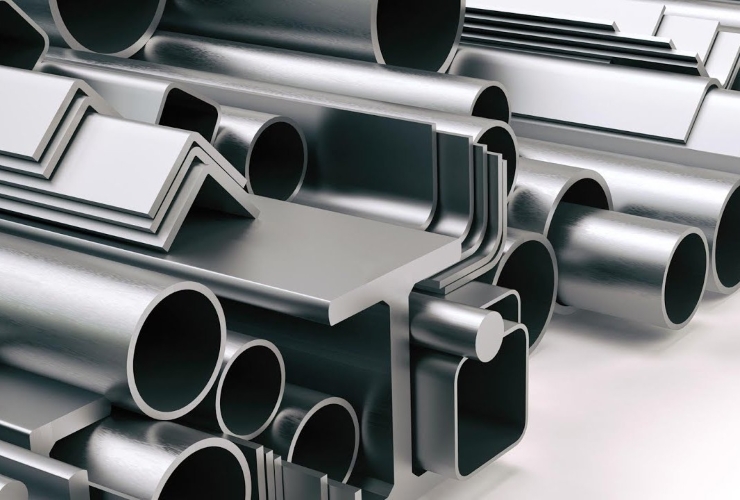- No.3, 327 S.V.P.Road, Makharai House, Mumbai- 400004, INDIA
- sales@ariesalloys.com
Aerospace Stainless Steel
- Home
- Aerospace Stainless Steel

Stainless Steel Alloys in Aerospace Applications: Composition, Standards, and Performance
Stainless steel alloys play a crucial role in aerospace applications due to their exceptional strength, corrosion resistance, and high-temperature stability. These alloys are widely used in structural components, landing gear, fasteners, and aerospace engine parts. Their durability and ability to perform in extreme environments make them indispensable for modern aircraft and spacecraft.
Why Stainless Steel Alloys for Aerospace?
Stainless steel alloys are selected for aerospace applications due to their key properties:
- High Strength & Toughness – Ensures structural integrity in demanding aerospace applications.
- Corrosion & Oxidation Resistance – Withstands exposure to extreme environments and chemicals.
- High-Temperature Performance – Retains strength and stability under thermal stress.
- Fatigue & Wear Resistance – Enhances durability in aerospace structural components.
Stainless steel alloys are selected for aerospace applications due to their key properties:
- High Strength & Toughness – Ensures structural integrity in demanding aerospace applications.
- Corrosion & Oxidation Resistance – Withstands exposure to extreme environments and chemicals.
- High-Temperature Performance – Retains strength and stability under thermal stress.
- Fatigue & Wear Resistance – Enhances durability in aerospace structural components.
Common Stainless Steel Alloys & Their Aerospace Applications
1. 17-4 PH Stainless Steel
- Applications: Aerospace fasteners, structural components, and landing gear.
- Chemical Composition:
- Chromium (Cr): 15.0-17.5%
- Nickel (Ni): 3.0-5.0%
- Copper (Cu): 3.0-5.0%
- Iron (Fe): Balance
- Niobium (Nb): 0.15-0.45%
- Standards: AMS 5643, ASTM A564
2. 15-5 PH Stainless Steel
- Applications: Actuator components, landing gear, and high-strength aerospace parts.
- Chemical Composition:
- Chromium (Cr): 14.0-15.5%
- Nickel (Ni): 3.5-5.5%
- Copper (Cu): 2.5-4.5%
- Iron (Fe): Balance
- Standards: AMS 5659, ASTM A564
3. 316L & 316LVM Stainless Steel
- Applications: Aerospace medical applications, corrosion-resistant structural parts, and aircraft tubing.
- Chemical Composition:
- Chromium (Cr): 16.0-18.0%
- Nickel (Ni): 10.0-14.0%
- Molybdenum (Mo): 2.0-3.0%
- Iron (Fe): Balance
- Carbon (C): 0.03% max
- Standards: AMS 5507, ASTM F138
4. 420 Stainless Steel
- Applications: Aerospace bearings, cutting tools, and turbine components.
- Chemical Composition:
- Chromium (Cr): 12.0-14.0%
- Carbon (C): 0.15-0.40%
- Iron (Fe): Balance
- Standards: AMS 5621, ASTM A276
5. Nitronic 60 Stainless Steel
- Applications: Aerospace wear-resistant components, fasteners, and high-strength parts.
- Chemical Composition:
- Chromium (Cr): 16.0-18.0%
- Nickel (Ni): 8.0-9.0%
- Manganese (Mn): 7.0-9.0%
- Silicon (Si): 3.5-4.5%
- Iron (Fe): Balance
- Standards: AMS 5863, ASTM A240
1. 17-4 PH Stainless Steel
- Applications: Aerospace fasteners, structural components, and landing gear.
- Chemical Composition:
- Chromium (Cr): 15.0-17.5%
- Nickel (Ni): 3.0-5.0%
- Copper (Cu): 3.0-5.0%
- Iron (Fe): Balance
- Niobium (Nb): 0.15-0.45%
- Standards: AMS 5643, ASTM A564
2. 15-5 PH Stainless Steel
- Applications: Actuator components, landing gear, and high-strength aerospace parts.
- Chemical Composition:
- Chromium (Cr): 14.0-15.5%
- Nickel (Ni): 3.5-5.5%
- Copper (Cu): 2.5-4.5%
- Iron (Fe): Balance
- Standards: AMS 5659, ASTM A564
3. 316L & 316LVM Stainless Steel
- Applications: Aerospace medical applications, corrosion-resistant structural parts, and aircraft tubing.
- Chemical Composition:
- Chromium (Cr): 16.0-18.0%
- Nickel (Ni): 10.0-14.0%
- Molybdenum (Mo): 2.0-3.0%
- Iron (Fe): Balance
- Carbon (C): 0.03% max
- Standards: AMS 5507, ASTM F138
4. 420 Stainless Steel
- Applications: Aerospace bearings, cutting tools, and turbine components.
- Chemical Composition:
- Chromium (Cr): 12.0-14.0%
- Carbon (C): 0.15-0.40%
- Iron (Fe): Balance
- Standards: AMS 5621, ASTM A276
5. Nitronic 60 Stainless Steel
- Applications: Aerospace wear-resistant components, fasteners, and high-strength parts.
- Chemical Composition:
- Chromium (Cr): 16.0-18.0%
- Nickel (Ni): 8.0-9.0%
- Manganese (Mn): 7.0-9.0%
- Silicon (Si): 3.5-4.5%
- Iron (Fe): Balance
- Standards: AMS 5863, ASTM A240
Aerospace Industry Standards for Stainless Steel Alloys
Stainless steel alloys used in aerospace applications must adhere to strict industry standards for quality and safety:
- ASTM (American Society for Testing and Materials) – Defines material composition and performance specifications.
- AMS (Aerospace Material Specifications) – Establishes specific aerospace material requirements.
- MIL-S (Military Specifications for Stainless Steel Alloys) – Governs stainless steel use in military aerospace applications.
- ISO (International Organization for Standardization) – Ensures global compliance and quality control.
Stainless steel alloys used in aerospace applications must adhere to strict industry standards for quality and safety:
- ASTM (American Society for Testing and Materials) – Defines material composition and performance specifications.
- AMS (Aerospace Material Specifications) – Establishes specific aerospace material requirements.
- MIL-S (Military Specifications for Stainless Steel Alloys) – Governs stainless steel use in military aerospace applications.
- ISO (International Organization for Standardization) – Ensures global compliance and quality control.
Conclusion
Stainless steel alloys are indispensable for aerospace applications requiring strength, corrosion resistance, and thermal stability. Aries Alloys provides high-quality aerospace-grade stainless steels, ensuring compliance with international standards for optimal performance in aviation and space exploration.
For more information on our stainless steel alloy inventory, contact Aries Alloys today!
Stainless steel alloys are indispensable for aerospace applications requiring strength, corrosion resistance, and thermal stability. Aries Alloys provides high-quality aerospace-grade stainless steels, ensuring compliance with international standards for optimal performance in aviation and space exploration.
For more information on our stainless steel alloy inventory, contact Aries Alloys today!
